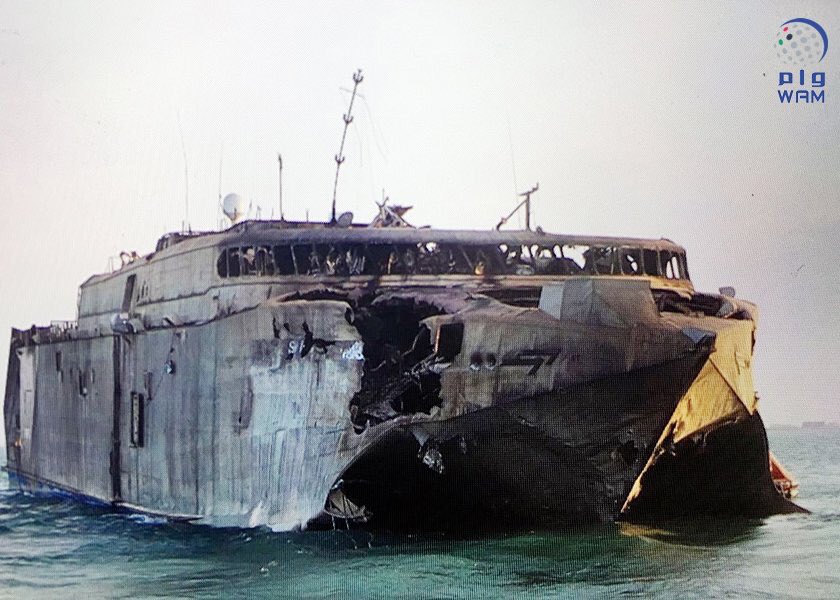They are there
In
Login if you are already registered
(no votes) |
(0 votes) |
Research Fellow at the Primakov Institute of World Economy and International Relations under the Russian Academy of Sciences, RIAC expert
The US Air Force has secretly transferred F-16 multirole fighters and KC-135 military aerial refueling aircraft to Djibouti, a small East African state on the Gulf of Aden coast. This was done back in July, but is only now being admitted.
Until it peacefully achieved independence in 1977, the small Republic of Djibouti was a French colony (ultimately a French “overseas territory”) called French Somaliland. Then as now, the value of this small country was primarily its strategic location – right by the Bab-el-Mandeb strait, which links the Red Sea with the Gulf of Aden. After gaining its independence Djibouti not only retained a French military presence but also gradually opened its territory to the military forces of other countries. It would not be an exaggeration to say that Djibouti is the only country in the world for which making its territory available for foreign military bases is a unique state-run business (alongside the less unique function of a free economic zone). And what’s most striking is that in all this Djibouti follows a policy of the strictest neutrality–everyone is welcome!
U.S. Department of Defense
The republic plays host to military facilities for France and Italy, the sole foreign military base maintained by Japan (of course from Tokyo’s point of view this is more a political facility where an anti-piracy unit is based), and China’s first overseas base. The biggest base, Camp Lemonnier, which of course belongs to the USA, is situated in the capital (which bears the same name as the country) and uses the airport runway. The base has been operational since 2001, primarily as a transport hub for shipments to the Middle East/Afghanistan and as a base for reconnaissance and combat drones (including the CIA’s notorious “killer drones”, which have carried out operations to eliminate heads of terrorist organisations and armed gangs in neighbouring Yemen and Somalia) and special forces. The base has been used only rarely for warplane deployments, since the USA has had bases in the Gulf countries which are closer to the main theatres of operations (Iraq, Afghanistan).
However, according to a report published in Stars and Stripes, citing the US Africa Command, in July 2016 an unspecified number of F-16 fighters were transferred to Camp Lemonnier from the US Air Force’s 31st Fighter Wing, stationed at Aviano Air Base in Italy. In addition, KC-135 military aerial refueling aircraft of the USAF’s 100th Air Refueling Wing were transferred from Great Britain. According to a statement by the Africa Command, this redeployment was a reaction to the deteriorating situation in South Sudan and was a “precautionary measure in order to protect American citizens and American interests if required” in that state, one of the youngest in the world. Djibouti is about 1,500 km from the capital of South Sudan, which is not close for a fighter, but with air-refuelling is an entirely achievable distance (at any rate, their colleagues from bases in the UAE and Saudi Arabia fly an even greater distance to targets in Iraq and Syria).
In July South Sudan was effectively in a state of civil war, and on 7 July American diplomats came under fire (the aircraft were possibly transferred as a reaction to this incident). The situation remains extremely tense, and in August the UN decided to increase the number of peacekeepers to 17,000. The same Africa Command statement said that as a precautionary measure the fighter planes would remain in Djibouti, and this should probably be taken to mean that they will stay there for the foreseeable future.
It is quite unusual for a redeployment of aircraft to become known only three months after the event. The high level of secrecy may indicate that the US Air Force was preparing to carry out surprise air strikes, possibly in support of a special forces operation to evacuate the diplomatic corps and American citizens.
However, the question of why this deployment has now been revealed is just as interesting as the reasons for concealing it. It can hardly be a plain coincidence that Djibouti is situated just across a narrow gulf from western Yemen, an area mainly occupied by Houthi forces. Last week they are believed to have launched three unsuccessful missile attacks on American destroyers. On 13 October the US Navy retaliated by firing cruise missiles at “three radar sites located on Houthi-controlled territory on the Yemeni coast of the Red Sea”.

twitter.com/©MbKS15
The National Marine Dredging Company HSV-2 Swift (rented by the UAE Navy) after it was attacked by a C-802 missile near Bab-el-Mandeb
There is a lot that is unclear in the story of the missile attacks on the American ships. They came straight after the successful strike by a Chinese-made anti-ship missile against a UAE transport catamaran on 1 October and, perhaps more importantly, the 8 October attack on a funeral procession in Sana’a by aircraft of the Saudi-led coalition, which led to the death of more than 150 people. The procession, according to a Saudi statement, was hit by mistake, but given that this was the funeral of the father of the interior minister of Yemen’s Supreme Political Council (the Houthi government) and that those killed and injured reportedly included senior military and political figures, a dark motive cannot be ruled out. The attack, which caused such major civilian casualties, met with a harsh reaction in the world’s media. The pressure of public opinion forced the USA to state that it is considering reviewing its support for the Saudi coalition–American aircraft are not directly involved in air strikes but are providing air refuelling for Saudi coalition planes, passing on intelligence information, and probably providing assistance in planning at the level of military advisers.
It is not entirely clear what missiles were fired at the destroyer and how it repulsed the attack–whether it was by electronic countermeasures or anti-missile missiles, judging by its own reports the US Navy itself is not entirely sure. The Houthis declined to take responsibility for the attacks. It is also unclear what type of radars were destroyed by the retaliatory strikes–the US Navy has only published video of a Tomahawk missile launch, without the usual objective target strike monitoring data. What RT later put out as the destroyed radar sites turned out to be old video of a destroyed anti-aircraft missile system.
Overall, in the current situation the Houthi attacks on American warships were just by the way, to remind everyone who the “bad guys” are. However, to be fair and without encouraging conspiracy theories, it is worth noting that they have a very negative attitude to the USA, to put it mildly,[i] and after their success against the Emirates catamaran they might well have tried their strength against a “bigger fish”. Individual Chinese anti-ship missiles should indeed be something that the air defence systems of American destroyers, which for decades have been built to tackle such targets, can deal with. As for denying involvement–well, why take responsibility for a failed attack?
In any case, the war situation in Yemen is getting worse, particularly in terms of the USA being drawn into it. The statement about the long-standing deployment of fighters in Djibouti, just a few hundred kilometres from Yemen, may rightly be regarded as part of this process. During the last civil war in Yemen American fighters periodically flew unpublicised operations against Al-Qaeda targets from there, and this situation could be repeated at any moment–after all, the strike against the Yemeni radar sites was made in response to the second attack on US destroyers, and now, after the third attack, it’s the USA’s move.
[i] The movement’s official slogan is “God is great, death to America, death to Israel, a curse on the Jews, victory for Islam”
(no votes) |
(0 votes) |




